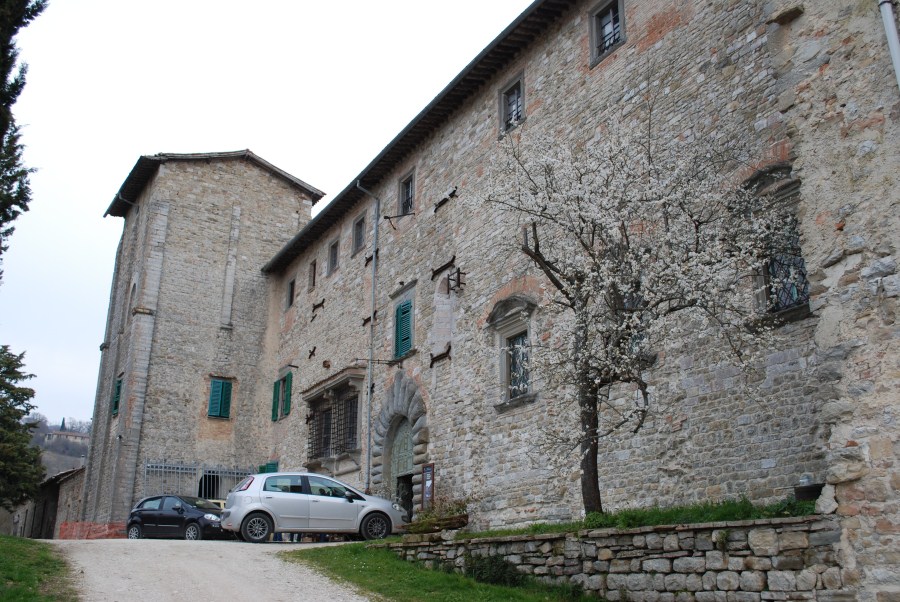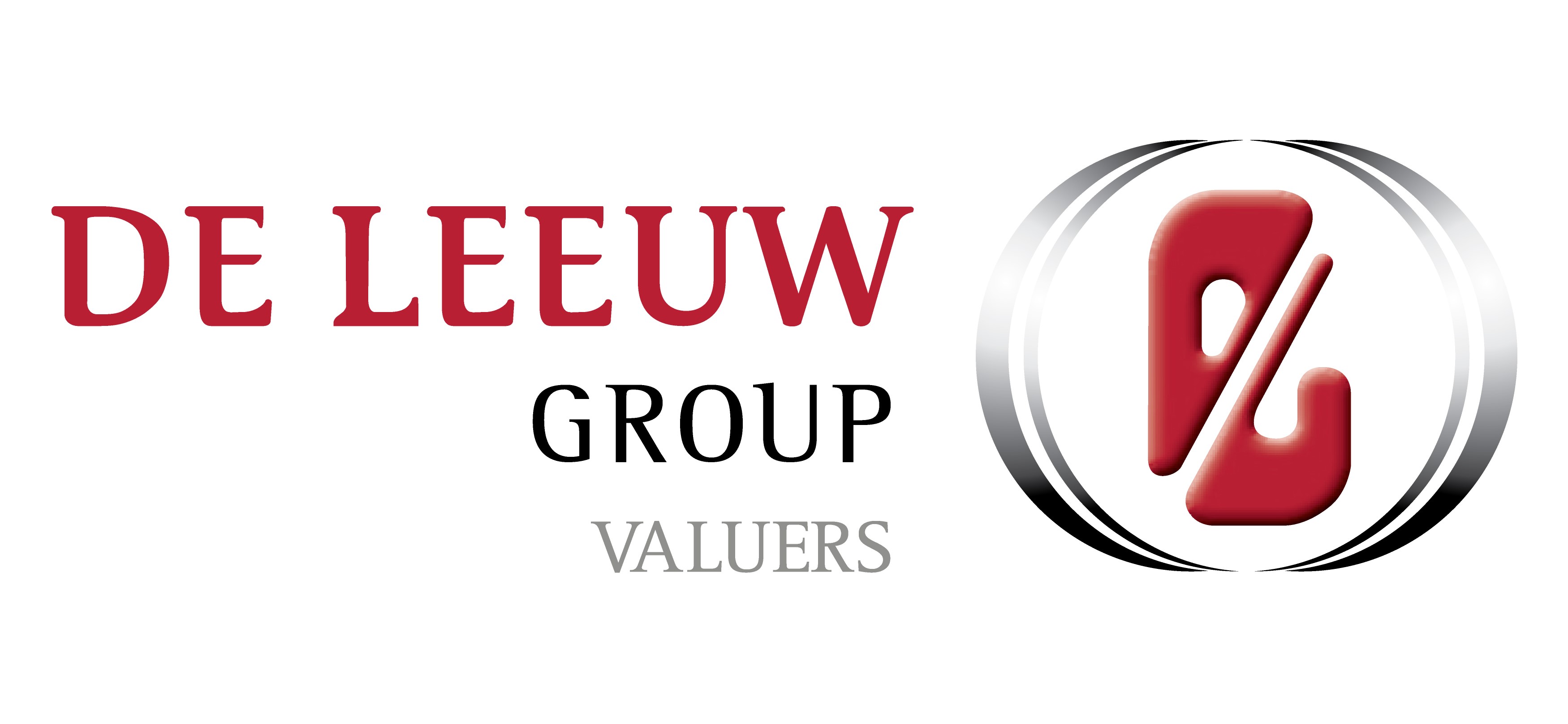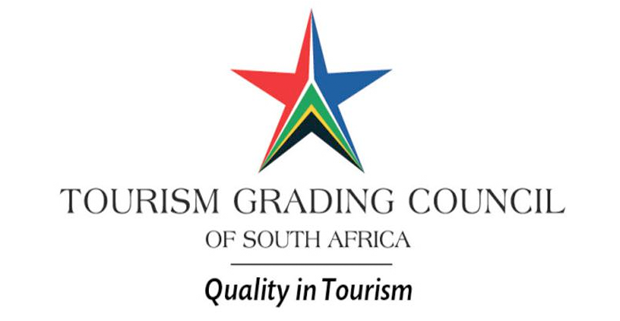








































































Owner's statement
We propose a Castle of 1600 in Umbria with 45 rooms, restaurant surrounded by 500 hectares of parkland, used as a luxury resort and events, the castle can be expanded by creating other rooms and suites, spa, meeting rooms, excluding the exterior with environmental constraints, ideal for organizing fashion shows of global brands or events of collector's car shows. Anyone interested for more information and meeting with the property on site requires an official buyer's loi. Confidential negotiations.
________________________________________________
Background
From the medieval chronicle of Greffolino Valerianiwe discover that about a thousand Gubbions went on the crusades against the Turks, who had invaded the holy places in Palestine; among the noble families who participated in the long campaign, there were also the counts of Alfiolo.
We also know that in 1146 a certain Matteo d'Alfiolo took part in the second Crusade promoted by Bernardo di Chiaravalle, which ended two years later with the defeat of the Christian army. Subsequently, in the absence of heirs, the assets passed to the Bishop of Gubbio who assigned the cenoby to the Benedictines (an Abbas Ventura is documented in 1039) who reclaimed the surrounding marsh (the toponym of the place is still " Padule ").
The fortress, initially formed by a tower and two lateral bodies, assumed the appearance of a Benedictine abbey in the 13th century, with the construction of two other wings which thus closed a quadrilateral in which the cloister of the monastery was created.
In 1300, in its vicinity, a violent battle was fought between Guelph militias, made up of Perugians and exiles from Gubbio, and Ghibelline forces, who had occupied Gubbio for 32 days with the help of garrisons from Tuscany, Marche and Romagna. It was the notorious Uguccione della Faggiola who organized the pro-imperial sortie, of whom Dante Alighieri himself tells us in the Divine Comedy. In May 1300, Uguccione, together with Federico da Montefeltro and Uberto Malatesta, took Gubbio and became podestà. A few weeks later, on 24 June, the cardinal deacon of San Adriano, Napoleone Orsini, drove Uguccione out of Gubbio, reconquering the city for the Guelph forces of Boniface VIII and the Perugini. In the same year , Comes Albasius de Alphiolo died of the plague in Perugia . The difficulties for the structure did not end there. In fact, in 1350, Giovanni di Cantuccio Gabrielli, lord of Gubbio, clashed against his enemies in 1350 and the result was the partial destruction of the monastery and the church of S. Maria d'Alfiolo.
At this point, the authorities probably realized the strategic importance of the structure, which dominated the valley and was located a short distance, in a south-easterly direction, from the city, the last bulwark before the city walls.
In 1382 it was decided to equip the monastery with a solid military tower (in fact from that moment on it was also called " fortlitium " of S. Maria d'Alfiolo or " castrum de S. Maria de Alfiolo ". A small guided garrison was stationed inside by a captain.The names of these castellans are partially known: Pucciardo Massoli (1382), Gioacchino Luce (1410), Antonius de Montelone (1414), Antonius Padule (1432-34).We know that in 1442 it suffered a serious fire as remembers an inscription that is still present.
In 1447 a very important change takes place, which will project the structure into the Renaissance and will be the reason for a profound architectural reorganization: it became the summer residence of the bishop of Gubbio, Antonio Severi (1444-1472), who in 1452 called Lombard workers to further embellish the abbey.
In 1537 a well was built inside the cloister, surrounded by a splendid loggia, by Benedictus Solomonis of Gubbio, a generous Jewish member of the lively community that had settled in Gubbio since 1310, who left a commemorative inscription at the well in the iron that supports the pulley in which is engraved: Benedictus Salomonis Eugubinus fe. de mense June 1537 .
In 1530 the bishop Federico Fregosi (1480-1541) completely restructured the architectural complex in the Renaissance style. Furthermore, between 1644 and 1672, the Assisi bishop Alessandro Sperelli also took care of modernizing and restoring the building. Over the centuries the structure, thanks therefore to the evergetism of the Gubbio bishops, increasingly assumed the appearance of a Renaissance palace with an adjacent church, still well preserved, on whose vault of the portal a frieze with human and animal figures of remarkable beauty is visible.
After the unification of Italy the palace became state property and successively various owners alternated: the Degolas, the Riccis of Genoa, the Opera Combattenti, the Fondi Rustici real estate company. In 1946 it was taken over by SAIM of Salerno, a joint-stock company in which Comm. Nunziante Salvati was a shareholder, who in 1948 obtained it as his share under the name of SAIE. The current owners are in fact the children, represented by Eng. Michele who with so much passion and competence has highlighted many early medieval architectural elements of this grandiose complex.The church is adorned with many decorative elements, which recall various architectural styles. In this we can see both the passing of the centuries and how, strangely, all its owners were very careful and diligent in enriching and decorating it.
The Church
Among them we find the main protagonists of the history of the city of Gubbio: from Giovanni Gabrielli to the Bishops of Gubbio starting from Antonio Severi, passing through Fregosi and Alessandro Sperelli. Even today inside you can see a wonderful Romanesque mullioned window, an elegant floor with small terracotta tiles, and in the sacristy an ancient inscription next to an ornamental band with zoomorphic motifs which reads: "MCCXXIIII Rainerius fecit ".
The dating takes us back to 1224, to a rather obscure phase in the story of the Benedictine monastery, of which little or rather nothing is known. Another inscription in which it was written: + Anno Dni 1295 Tempore Dni Gerardi Abbatis is mentioned in PL Menichetti's book. Ultimately, this further memory tells us how much the XIII century was an important historical period for the Benedictines of S. Maria d'Alfiolo, of development, testified by inscriptions that recall the importance that this spiritual centre must have had.
A plaque on the floor of the church located immediately to the right of the entrance informs us that in 1539 the castle underwent transformations and a new reconstruction which changed its orientation with respect to the original layout. The portal of the church was moved to the opposite side in fact the current internal door was originally the wall of the altar, and the original portal has been walled up and is only visible from the sacristy.
Gubbio
Gubbio (Italian pronunciation: [ˈgubbjo]) is an Italian town and comune in the far northeastern part of the Italian province of Perugia (Umbria). It is located on the lowest slope of Mt. Ingino, a small mountain of the Apennines.
History
The city's origins are very ancient. The hills above the town were already occupied in the Bronze Age. As Ikuvium, it was an important town of the Umbri in pre-Roman times, made famous for the discovery there in 1444 of the Iguvine Tablets, a set of bronze tablets that together constitute the largest surviving text in the Umbrian language. After the Roman conquest in the 2nd century BC – it kept its name as Iguvium – the city remained important, as attested by its Roman theatre, the second-largest surviving in the world.
Gubbio became very powerful in the beginning of the Middle Ages. The town sent 1000 knights to fight in the First Crusade under the lead of Girolamo of the prominent Gabrielli family, who according to an undocumented local tradition, they were the first to reach the Church of the Holy Sepulchre when Jerusalem was seized (1099).
The following centuries in Gubbio were turbulent, featuring wars against the neighboring towns of Umbria. One of these wars saw the miraculous intervention of its bishop, Ubald, who secured Gubbio an overwhelming victory (1151) and a period of prosperity. In the struggles of Guelphs and Ghibellines, the Gabrielli, such as the condottiero Cante dei Gabrielli (c. 1260–1335), fought for the Guelph faction, supporting the papacy. As Podestà of Florence, Cante exiled Dante Alighieri, ensuring his own lasting notoriety.
In 1350 Giovanni Gabrielli, count of Borgovalle seized power as the lord of Gubbio. His rule was short, and he was forced to hand over the town to Cardinal Gil Álvarez Carrillo de Albornoz, representing the Papal states (1354).
A few years later, Gabriello Gabrielli, the bishop of Gubbio, also proclaimed himself lord of Gubbio (Signor d'Agobbio). Betrayed by a group of noblemen which included many of his relatives, the bishop was forced to leave the town and seek refuge at his home castle at Cantiano.
With the decline of the political prestige of the Gabrielli, Gubbio was thereafter incorporated into the territories of the House of Montefeltro. The lord of Urbino, Federico da Montefeltro rebuilt the ancient Palazzo Ducale in Gubbio, incorporating in it a studiolo veneered with intarsia like his studiolo at Urbino.[5] The maiolica industry at Gubbio reached its apogee in the first half of the 16th century, with metallic lustre glazes imitating gold and copper.
Gubbio became part of the Papal States in 1631, when the della Rovere family, to whom the Duchy of Urbino had been granted, was extinguished. In 1860 Gubbio was incorporated into the Kingdom of Italy along with the rest of the Papal States.
The name of the Pamphili family, a great papal family, originated in Gubbio then went to Rome under the pontificate of Pope Innocent VIII (1484–1492), and is immortalized by Diego Velázquez and his portrait of Pope Innocent X.
Geography
Overview
The town is located in northern Umbria, near the border with Marche. The municipality borders Cagli (PU), Cantiano (PU), Costacciaro, Fossato di Vico, Gualdo Tadino, Perugia, Pietralunga, Scheggia e Pascelupo, Sigillo, Umbertide and Valfabbrica.
Culture
Gubbio is home to the Corsa dei Ceri, a run held every year always on Saint Ubaldo Day, the 15th day of May, in which three teams, devoted to Ubald, Saint George and Saint Anthony the Great run through throngs of cheering supporters clad in the distinctive colours of yellow, blue and black, with white trousers and red belts and neckbands, up much of the mountain from the main square in front of the Palazzo dei Consoli to the basilica of St. Ubaldo, each team carrying a statue of their saint mounted on a wooden octagonal prism, similar to an hour-glass shape 4 metres (13 ft) tall and weighing about 280 kg (617 lb).
The race has strong devotional, civic, and historical overtones and is one of the best-known folklore manifestations in Italy; the Ceri were chosen as the heraldic emblem on the coat of arms of Umbria as a modern administrative region.
A celebration like the Corsa dei Ceri is held also in Jessup, Pennsylvania. In this small town the people carry out the same festivities as the residents of Gubbio do by "racing" the three statues through the streets during the Memorial Day weekend. This remains an important and sacred event in both towns.
Gubbio was also one of the centres of production of the Italian pottery (maiolica), during the Renaissance. The most important Italian potter of that period, Giorgio Andreoli, was active in Gubbio during the early 16th century.
The town's most famous story is that of "The Wolf of Gubbio"; a man eating wolf that was tamed by St. Francis of Assisi and who then became a docile resident of the city. The legend is related in the 14th-century Little Flowers of St. Francis.
The Gubbio Layer
Gubbio is also known among geologists and palaeontologists as the discovery place of what was at first called the "Gubbio layer", a sedimentary layer enriched in iridium that was exposed by a roadcut outside of town. This thin, dark band of sediment marks the Cretaceous–Paleogene boundary, also known as the K–T boundary or K–Pg boundary, between the Cretaceous and Paleogene geological periods about 66 million years ago, and was formed by infalling debris from the gigantic meteor impact probably responsible for the mass extinction of the dinosaurs. Its iridium, a heavy metal rare on Earth's surface, is plentiful in extraterrestrial material such as comets and asteroids. It also contains small globules of glassy material called tektites, formed in the initial impact. Discovered at Gubbio, the Cretaceous–Paleogene boundary is also visible at many places all over the world. The characteristics of this boundary layer support the theory that a devastating meteorite impact, with accompanying ecological and climatic disturbance, was directly responsible for the Cretaceous–Paleogene extinction event.
Perugia
Perugia is the capital city of Umbria in central Italy, crossed by the River Tiber, and of the province of Perugia. The city is located about 164 km (102 mi) north of Rome and 148 km (92 mi) southeast of Florence. It covers a high hilltop and part of the valleys around the area. The region of Umbria is bordered by Tuscany, Lazio, and Marche.
The history of Perugia goes back to the Etruscan period; Perugia was one of the main Etruscan cities.
The city is also known as the universities town, with the University of Perugia founded in 1308, the University for Foreigners, and some smaller colleges such as the Academy of Fine Arts "Pietro Vannucci" (Italian: Accademia di Belle Arti "Pietro Vannucci") public athenaeum founded in 1573, the Perugia University Institute of Linguistic Mediation for translators and interpreters, the Music Conservatory of Perugia, founded in 1788, and other institutes.
Perugia is also a well-known cultural and artistic centre of Italy. The city hosts multiple annual festivals and events, e.g., the Eurochocolate Festival (October), the Umbria Jazz Festival (July), and the International Journalism Festival (in April), and is associated with multiple notable people in the arts.
Painter Pietro Vannucci, nicknamed Perugino, was a native of Città della Pieve, near Perugia. He decorated the local Sala del Cambio with a series of frescoes; eight of his pictures can also be seen in the National Gallery of Umbria.
Perugino was the teacher of Raphael,the great Renaissance artist who produced five paintings in Perugia (today no longer in the city) and one fresco. Another painter, Pinturicchio, lived in Perugia. Galeazzo Alessi is the most famous architect from Perugia.
The city's symbol is the griffin, which can be seen in the form of plaques and statues on buildings around the city. It is also the symbol of the local football club A.C. Perugia, who have previously played in the Serie A.
Umbria
Umbria is a region of central Italy. It includes Lake Trasimeno and Marmore Falls, and is crossed by the River Tiber. It is the only landlocked region on the Apennine Peninsula. The regional capital is Perugia.
The region is characterized by hills, mountains, valleys and historical towns such as the university centre of Perugia, Assisi (a World Heritage Site associated with St. Francis of Assisi), Terni, Norcia, Città di Castello, Gubbio, Spoleto, Orvieto, Todi, Castiglione del Lago, Narni, Amelia, Spello and other small cities.
Geography
Umbria is bordered by Tuscany to the west and the north, Marche to the east and Lazio to the south. Partly hilly and mountainous, and partly flat and fertile owing to the valley of the Tiber, its topography includes part of the central Apennines, with the highest point in the region at Monte Vettore on the border of the Marche, at 2,476 metres (8,123 feet); the lowest point is Attigliano, 96 metres (315 feet). It is the only Italian region having neither a coastline nor a common border with other countries. The comune of Città di Castello has an exclave named Monte Ruperto within Marche. Contained within Umbria is the hamlet of Cospaia, which was a tiny republic from 1440 to 1826, created by accident.
Umbria is crossed by two valleys: the Umbrian valley ("Valle Umbra"), stretching from Perugia to Spoleto, and the Tiber Valley ("Val Tiberina"), north and west of the first one, from Città di Castello to the border with Lazio. The Tiber River forms the approximate border with Lazio, although its source is just over the Tuscan border. The Tiber's three principal tributaries flow southward through Umbria. The Chiascio basin is relatively uninhabited as far as Bastia Umbra. About 10 kilometres (6 miles) farther on, it joins the Tiber at Torgiano. The Topino, cleaving the Apennines with passes that the Via Flaminia and successor roads follow, makes a sharp turn at Foligno to flow NW for a few kilometres before joining the Chiascio below Bettona. The third river is the Nera, flowing into the Tiber further south, at Terni; its valley is called the Valnerina. The upper Nera cuts ravines in the mountains; the lower, in the Tiber basin, has created a wide floodplain.
In antiquity, the plain was covered by a pair of shallow, interlocking lakes, the Lacus Clitorius and the Lacus Umber. They were drained by the Romans over several hundred years. An earthquake in the 4th century and the political collapse of the Roman Empire resulted in the refilling of the basin. It was drained a second time, almost a thousand years later, during a 500-year period: Benedictine monks started the process in the 13th century, and the draining was completed by an engineer from Foligno in the 18th century.
The eastern part of the region, being crossed by many faults, has been often hit by earthquakes: the last ones have been that of 1997 (which hit Nocera Umbra, Gualdo Tadino, Assisi and Foligno) and those of 2016 (which struck Norcia and the Valnerina).
In literature, Umbria is referred to as Il cuore verde d'Italia or The green heart of Italy. The phrase is taken from a poem by Giosuè Carducci, the subject of which is the source of the Clitunno River in Umbria.
Cliff Jacobs (Nat Dpl Hotel Man (UJ). MPRE. GA Level 5 TEFL) Managing Principal / CEO Exquisite Hotel Consultants (Pty) Ltd Mobile: +27 (0) 67 587 2532 (voice calls) Mobile: +27 (0) 84 413 1071 (WhatsApp voice calls and chats only) / +27 (0) 61 716 6951 (WhatsApp voice calls and chats only) Email: cliff@exquisitehotelconsultants.com Web: https://www.exquisitehotelconsultants.com © All rights reserved Terms and Conditions apply Scroll down to view our Hospitality Properties and Businesses for sale or lease or lease-to-buy or partnership arrangement or management agreement arrangement.



 Name: BondExcel
Name: BondExcel Mortgage Origination
We interface with all of the major banks in South Africa to ensure that you get the right home loan solution at the best possible rate.
Looking forward to assist you with your home loan application!
 Name: Businessentials For Hospitality
Name: Businessentials For Hospitality Hospitality Consulting, Accounting, Bookkeeping and Payroll Services
 Name: Capital Efficiency Group
Name: Capital Efficiency Group Corporate Finance, Tax & Accounting and Treasury Services.
Attorneys, Notaries and Conveyancers
 Name: D E I R D R E R E N N I E R S Interior Design
Name: D E I R D R E R E N N I E R S Interior Design Interior Design
 Name: De Leeuw Valuers Cape Town
Name: De Leeuw Valuers Cape Town Property Valuation Services
 Name: E C Mobility
Name: E C Mobility International property, law and immigration
 Name: Edward Tokolo Kasete
Name: Edward Tokolo Kasete Real Estate Specialist - Our Associate in Namibia
We offer an international platform of specialist hospitality property and/or business brokering services by listing and marketing for sale or lease or by investment partner arrangement or management agreement arrangement of a variety of hospitality products (i.e. hotels, resorts, boutique hotels, guest houses, guest lodges, B&Bs, game resorts, wine farms, yachts, cruise liners, etc) through our association with EC Mobility (in Portugal and Spain), BON Hotels (Africa), Giovanni Conti (Italy, North and East Africa, Sri Lanka), Nuno Boquinhas (Portugal, Azores, Madeira, Mozambique), Property 24, Seeff Property Services, Harcourts, Realnet, RE/MAX, Dogon Property Group, Rawson Estates, among many other prominent commercial estate agencies throughout Southern Africa - and now we are entering other African Countries on the East and West Coasts of Africa and moving further abroad! To date, Exquisite Hotel Consultants has a presence in over 80 countries - and counting...
Working with the above-mentioned agencies and others provides the largest possible reach nationally and internationally for all prospective buyers and sellers wishing to enter or exit the Hospitality Industry.
Sister websites have been opened in the following countries: United Kingdom: see www.exquisitehotelconsultants.co.uk, and in Germany: see www.exquisitehotelconsultants.de, and in the United States of America: see www.exquisitehotelconsultants.us.
Please note that several of our hospitality properties and/or businesses for sale or lease or through business partnership arrangements or management contracts are officially "Off-Market" - mainly for privacy reasons. Therefore, they are not listed as part of our hospitality properties/businesses for sale or lease stock. Please contact me for further details.
Should you be considering to sell or buy or lease or obtain a partnership arrangement or management agreement arrangement for your hotel, boutique hotel, resort, guest house, B&B, game lodge, game resort, guest farm, yacht or cruise liner etc, I would be most pleased to provide you with further details of our way of working to effectively market and sell your property(ies) and/or business(es).
 Name: Electrolux Professional
Name: Electrolux Professional Food Service, Beverage and Laundry Solutions
Electrolux Professional is a leading global provider of foodservice, beverage and laundry solutions, serving a wide range of customers globally, from restaurants and hotels to healthcare, educational and other service facilities.
 Name: Exquisite Hotel Consultants' Hospitality Training Department
Name: Exquisite Hotel Consultants' Hospitality Training Department Learn to speak Hotel English (one-to-one online course)
Our TEFL trained tutors teach the following functions
The course consists of 21 lessons (4 to 5 one-hour lessons per month).
 Name: FVE Interiors
Name: FVE Interiors Interior Design
 Name: Healing Earth
Name: Healing Earth Hotel Amenities - inspired by Africa
 Name: Hospro
Name: Hospro Hospitality Consultancy and Procurement
 Name: Hotel Revenue Management
Name: Hotel Revenue Management Revenue (yield) Management
Online room inventory Distribution & Rates optimisation
Implementation of Best Available Rate (BAR), in conjunction with point 1 & 2
 Name: Indigo Real Estate Agency
Name: Indigo Real Estate Agency Real Estate Agency - Our Associate in Mozambique
 Name: Lisa Dunn - Tourism Grading Assessor
Name: Lisa Dunn - Tourism Grading Assessor Tourism Grading Assessment
 Name: Ooba (Pty) Ltd
Name: Ooba (Pty) Ltd Mortgage Origination
ooba offers you:
 Name: SK Sambu Tours & Transfers
Name: SK Sambu Tours & Transfers Johannesburg based Tours & Transfers Operator
We look forward to being of service to you.
Kind regards
King Sambu
 Name: Soul Private Collection
Name: Soul Private Collection Hotel Management and Marketing
 Name: The Dumb Butler Hospitality Suppliers
Name: The Dumb Butler Hospitality Suppliers Hotel Linen Suppliers
LUX Award Winners 2021 for The Best Hospitality Suppliers. We are a proudly South African brand established in 2006.
We Supply:
 Name: The High Street Auction Company
Name: The High Street Auction Company
Property Auctioneers
Appreciating Property Value
 Name: Touch Point Retail
Name: Touch Point Retail Smart Interior Design
Cliff Jacobs (Nat Dpl Hotel Man (UJ). MPRE. GA Level 5 TEFL) Managing Principal / CEO Exquisite Hotel Consultants (Pty) Ltd Mobile: +27 (0) 67 587 2532 (voice calls) Mobile: +27 (0) 84 413 1071 (WhatsApp voice calls and chats only) / +27 (0) 61 716 6951 (WhatsApp voice calls and chats only) Email: cliff@exquisitehotelconsultants.com Web: https://www.exquisitehotelconsultants.com © All rights reserved Terms and Conditions apply Scroll down to view our Hospitality Properties and Businesses for sale or lease or lease-to-buy or partnership arrangement or management agreement arrangement.